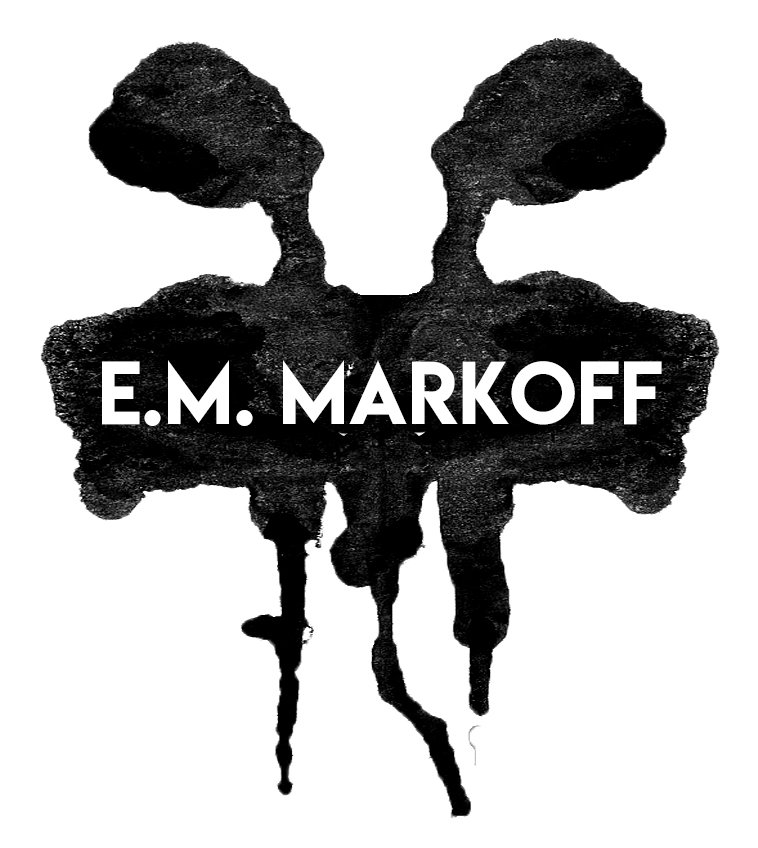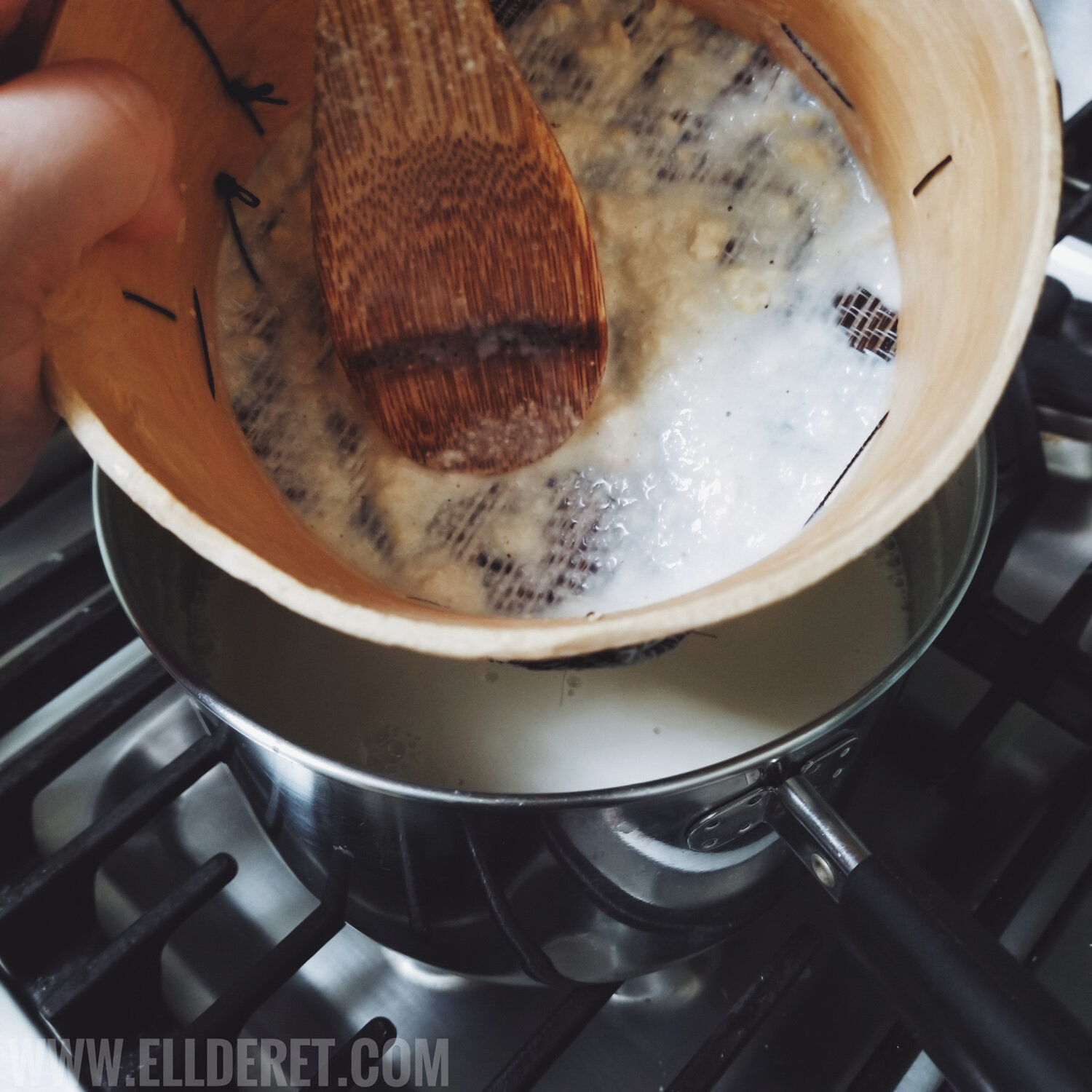A Bookish Playlist for To Nurture & Kill
It’s day 24 of “sheltering in place” in San Francisco as the State attempts to help #flattenthecurve. Had Covid-19 not struck, I would be traveling down to Anaheim, CA for a weekend of vending and geeking out at WonderCon …
Gritty heroes, blood-soaked promises, and family bonds put to the test.
It’s day 24 of “sheltering in place” in San Francisco as the State attempts to help #flattenthecurve. Had Covid-19 not struck, I would be traveling down to Anaheim, CA for a weekend of vending and geeking out at WonderCon. The cancelation of WonderCon and subsequent conventions means lost income for me, but everyone’s health and safety comes first. More than anything, I want to see the faces of the readers I have met at conventions again, which means doing my part by staying home.
As a indie author, all I can offer is some form of entertainment while I keep working toward completing The Faceless God. I’ve gone deeper and deeper into the world with each draft and subsequent revision. It’s like the David Lynch quote I included in yesterday’s Twin Peaks 30th anniversary post: “I think that’s one of the great things about a continuing story: that you can go in, and go deeper and deeper and deeper. You begin to feel the mystery, and things start coming.”
While I continue diving further into the world of the Ellderet, I wanted to share a playlist I made back in 2017 for To Nurture & Kill. These are the songs that “made it” to the final draft of the story, the ones that when I listen to them I see myself in my mind’s eye writing the scenes. Most of the songs are instrumental, although a few have lyrics.
Let me know if you’ve read To Nurture & Kill or if any of the songs strike a chord!
We’re living in strange times. Let’s all be kind to each other, and don’t be racist.
See you soon,
EMM
Sweet Corn Atole Recipe: The Mexican Beverage that Appears in ‘To Nurture & Kill’
Hello!! I hope everyone had a lovely holiday. It’s a cold and rainy day in San Francisco as I write this post. The Assistant is sitting in his chair beside me, buried under a blanket because the room that is my office doesn’t really heat up …
“Kira took a huge gulp of his own drink, which was made of finely ground corn, milk, and sugar. ‘My dwink is the best.’”
Hello!! I hope everyone had a lovely holiday. It’s a cold and rainy day in San Francisco as I write this post. The Assistant is sitting in his chair beside me, buried under a blanket because the room that is my office doesn’t really heat up. He could easily go to another, much warmer room, yet he remains here with me in solidarity.
One blanket to rule them all.
The holidays are bittersweet for me, as I’m reminded of my mom and the countless hours we would spend making food. In that tradition, the husband and I made chicken mole chatino. And yes, it’s true what they say about Mexican mole: it does tend to have a lot of ingredients and steps, but the end result is always worth it. The other recipe that I made was the sweet corn drink that little Kira enjoys during the Corn Festival in To Nurture & Kill.
When thinking of the dishes and drinks to include in To Nurture & Kill, I naturally tapped into my own culture’s cuisine. Corn, or maize, is the heart of Mexican cooking, and so in the world of the Ellderet it is the staple crop of the southern half of Moenda, especially Florinia.
“They were natural mazes, mazes forged of rows of plowed dirt and leafy walls carrying the divine kernals that would nourish the people through the winter.”
The sweet corn drink enjoyed by Kira during the Corn Festival is a Mexican drink known as atole. The foundation of most atoles is usually masa harina, milk, sugar, and spices like Mexican cinnamon and vanilla. Some variations add fruit, fresh corn, or chocolate and piloncillo (champurrado) to the atole.
My version uses masa harina and fresh corn, since the beverage enjoyed by Kira in the book takes place during the Corn Festival that is held every year in Florinia at the beginning of the harvest season. Corn aplenty, y’all. You can also expect to see atole make an appearance again in the forthcoming The Faceless God. And this time, not only will you know what the characters are drinking, but you’ll also know how this warm and luscious drink is made. Plus, for a behind-the-scenes look at how the beverage was made, check out my IG Story Highlights!
Let me know if you’ve had this drink before and if you decide to make it yourself tag me on Instagram @tomesandcoffee :) I’m a bit slow with responses, but if you have a cooking question, please feel free to ask and I will answer it asap.
Now, off with you to the corn fields, dear, and pray that you reach their end without being bitten by a tezca snake. I hear that it’s a terrible way to die.
Ingredients:
6 fresh corn ears
1 cup water
1/4 - 1/2 sugar, or to taste
4 cups milk
1-2 tablespoons of masa harina
*1 tablespoon corn scratch (if you can’t find masa harina)
To a medium pot, add the water + cinnamon sticks. On low to medium-low heat, slowly infuse the water until it’s tinted a deep red. Add sugar to taste and dissolve. Remove the pot from heat, add 2 cups of milk, and set aside. Move on to preparing the corn.
Remove the husk and silk from your 6 ears of corn. Discard those, then rinse the ears, dry them, and carefully remove the kernels without offering up a finger to the Faceless God.
Add half of the kernels + 1 cup of milk to a blender. Blend to a smooth consistency. Add the remaining kernels + 1 cup of milk and repeat.
Place a fine mesh sieve over a bowl or pot. Pour the blended corn + milk mixture into the sieve, gently helping to push the liquid through with the back of a wooden spoon. Make sure to sieve and squeeze out as much of the liquid as possible. This will take a good 10 minutes.
Over medium-low heat, cook your mixture for 30-40 mins. Do not boil. At this stage, you will have to repeatedly stir to prevent the milk from burning/sticking to the bottom of the pot. Bouts of existentialism might occur as you stir stir stir away your life. Fun times for all!!!
After 15-20 minutes of cooking, proceed to the next step while continuing to cook. Dissolve 1-2 tablespoons of masa harina in a small bowl with a bit of the corn-milk mixture from the cooking pot. It will remain kinda clumpy, but that’s okay. Now, sieve the mixture into the pot while using the back of your wooden spoon to help push the masa harina clumps through the sieve. If you still have clumps hanging around in your sieve, ladle some of the milk-corn mixture and repeat the above step until most of it is gone. Discard whatever clumps/grains remain. This step is super important! You want to make sure your atole is smooth. You don’t want to piss off the Faceless God with grainy atole. Unless, of course, you want to …
*ALTERNATIVELY: Dissolve corn starch in a bit of cold water and then slowly pour and stir the mixture into the pot. If you can’t find or don’t like the taste of the nixtamalization process (calcium hydroxide), then use corn starch. Masa harina is what was used in To Nurture & Kill, and I personally love the taste.
Continue cooking and stirring over low heat until the atole thickens to the consistency of hot chocolate. Remove from heat when done.
Serve warm in a cup, grab a book and blanket, and settle in for comforting goodness.
Note: If your atole becomes too thick for your taste, warm up some milk and slowly stir it into the pot (or cup) until it becomes the consistency you want. This will dilute the corn flavor, but I feel that enjoying the texture of your drink is important.
Cheers!
EMM
My Experience Growing Up Bilingual and How That Informs The Pronunciation of Names in my Books
This post is spoiler free. This post is indebted to a long-time Ellderet reader who stopped by my booth at SVCC 2019 to ask how to pronounce certain names from The Deadbringer. He told me the way he pronounced them, and I told him the way I pronounced them …
Part 1:
In which statements are made, but first . . .
This post is spoiler free. Here only for the pronunciation? I gotcha. Scroll down to Part 2 and Fortune be with you. But if you want to get a clear sense where my pronunciations come from and why I have some names pronounced two different ways, then read on.
This post is indebted to a long-time Ellderet reader who stopped by my booth at SVCC 2019 to ask how to pronounce certain names from The Deadbringer. He told me the way he pronounced them, and I told him the way I pronounced them. This conversation prompted me to ask him if a glossary on pronunciation would be a welcome addition to The Faceless God. I can’t recall the exact words he used in response, but he did say that a glossary or something that explained “however you say the names, even if it’s made up” would be welcome.
This got me thinking how I—as someone who grew up speaking and consuming both English and Spanish—approached names in fantasy books. I realized that more often than not that I say the names of characters, places, cities, etc. with a Spanish pronunciation, especially if the spelling lends itself to it. This feels natural to me. Is this my subconscious way of inserting my culture into my everyday narrative so I can see myself represented? Possibly — I do want to see myself in the world around me and in the fantasy stories I read. All those fantasy names with lots of r’s? You can bet I was rolling the r’s in Perrin Aybara’s name.
As for the world of the Ellderet, the way I approach pronunciation is rooted in my experiences as a first generation bilingual Latinx. That is, I often pronounce the names in two different ways, as if reading them in both English and Spanish. Let’s use the name “Judas” as an example. In English, the word has a hard “J” sound (“joo-dus”), while in Spanish the “J” sounds more like an “H” as in “hoo-dahs.” (As you can no doubt tell, I don’t know shit about linguistics.) In my own personal experience, it wasn’t uncommon for me to hear bilingual speakers pronounce their name or a word (like “guacamole”) in both English and Spanish, and to switch back and forth between the two pronunciations in everyday conversation (Spanglish!).
Circling back to the name Judas, if it were my own name, would I prefer being addressed with one pronunciation over the other? It depends. It’s the individual who dictates how their name is pronounced, not everyone else around them. Data from Star Trek: The Next Generation most certainly had a preference, made it known, and asked others to respect his preferred pronunciation. There may be a character in the world of the Ellderet who shares Data’s views. Feel free to take a guess who it is 🙃
Commander Data explains the proper pronunciation of his name.
I most likely did a terrible job explaining myself but, as I mentioned before, I’d never given this topic much thought. For me, switching back and forth between languages, especially when I’m speaking with someone else who grew up speaking both English and Spanish, is normal. Being bilingual is a part of my everyday life and has no doubt found its way into my writing. #OwnVoices, y’all.
Part 2:
Finally, the pronunciation!
One last thing before I show off my amazing phonetic skills . . . Dear reader, say the names how they feel the most natural to you. But, if you want to know how I say them—how the characters refer to themselves in my head—then prepare to enter the madness I warned you about!
The Ellderet Cast
Kira Vidal (Kee-rah or Keer-uh Vee-dahl)
*Eutau Vidal (Oo-tow Vee-dahl)
Elia (Ee-lee-ah)
Sal Zem (Sahl Sem)
Kim Lafont (umm, Kim. Luh-fahnt)
Teemo-Na’dissima Rey de’Es (Tee-mow Nah-dee-see-mah)
J’kara (Jay-kah-ra or Jah-kah-ra)
Lyse (Leez)
Daemeon (Day-mee-on)
Natsu’es (Naht-soo-ess)
Huas-lan (Whas-lahn)
Telera (Te-le-rah)
E’sinea (Eh-see-nee-a or Ee-sin-ay-ah)
Amonos (Ah-mo-nohs)
Marya Herzmmen (Mar-yah Hers-men)
Kristoff Herzmmen (Kris-toff Hers-men)
Ga’jona (Gah-jo-nuh)
Sa (Sah)
Lauchitl (Lau-che-tle)
Adan (Ah-dahn)
*Eutau. It’s Oo-tow, but “tow” as in “ow!” not “I need to tow my car.” :)
The cities and towns of Moenda
Opulancae (Op-you-len-say)
Suelosa (Swey-low-sah or Sue-los-ah)
Rhaemond (Ray-mond)
Xulmé (Shul-meh)
Ilvra (Eel-vrah)
Kessrennt (Kess-rent)
Jané (Ha-neh or Juh-nay)
Ayotil (Ah-yo-teel)
Nhaleri (Nah-le-re)
Florinia (Flo-ree-neeh-ah or Flor-in-ee-uh)
Ulivi (Oo-le-ve)
It may seem strange that I have multiple pronunciations for the same words, but that’s what growing up bilingual is all about.
How would you pronounce these words? 🤔
Until next we meet,
EMM 🥀
2019 Upcoming Events:
10/2/19: Tales of Horror | San Mateo Library | San Mateo, CA | Free | Reading
10/11/19: Stephen Chbosky with E.M. Markoff | Kepler’s Literary Foundation | Menlo Park, CA | 7:30pm - 9pm | Buy tickets
10/19/19: Lit Crawl | Dalva | San Francisco, CA | Free | Reading




























